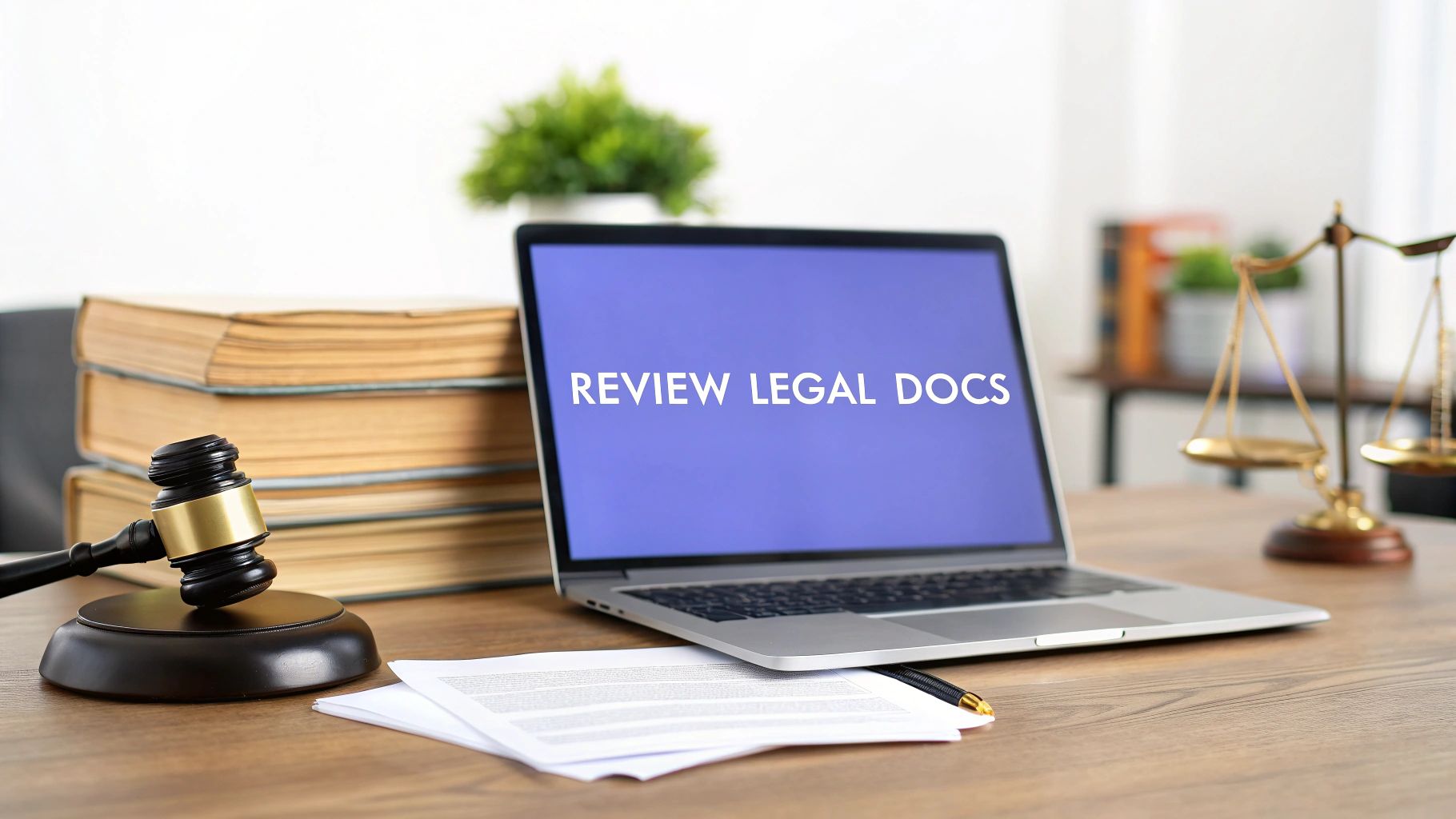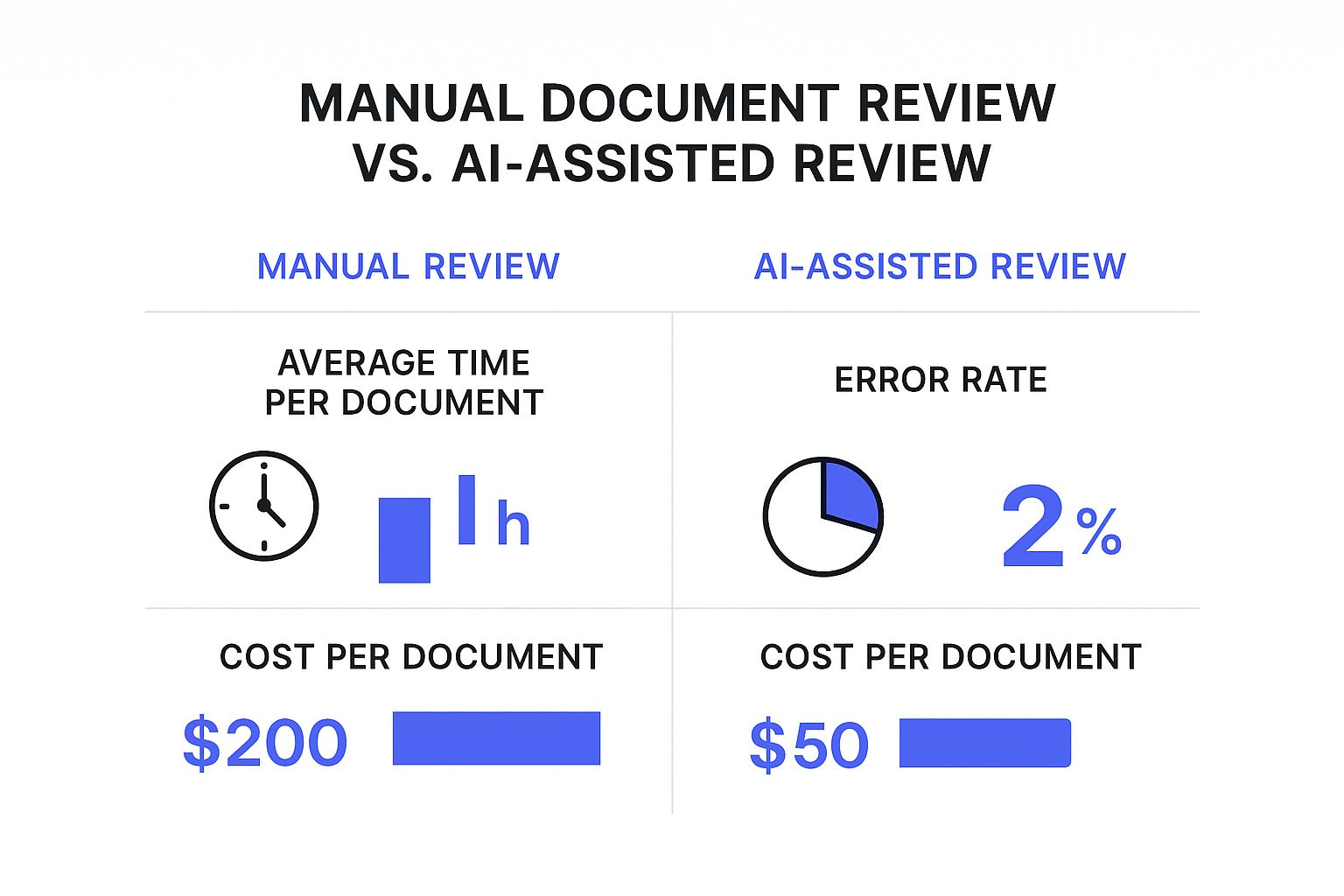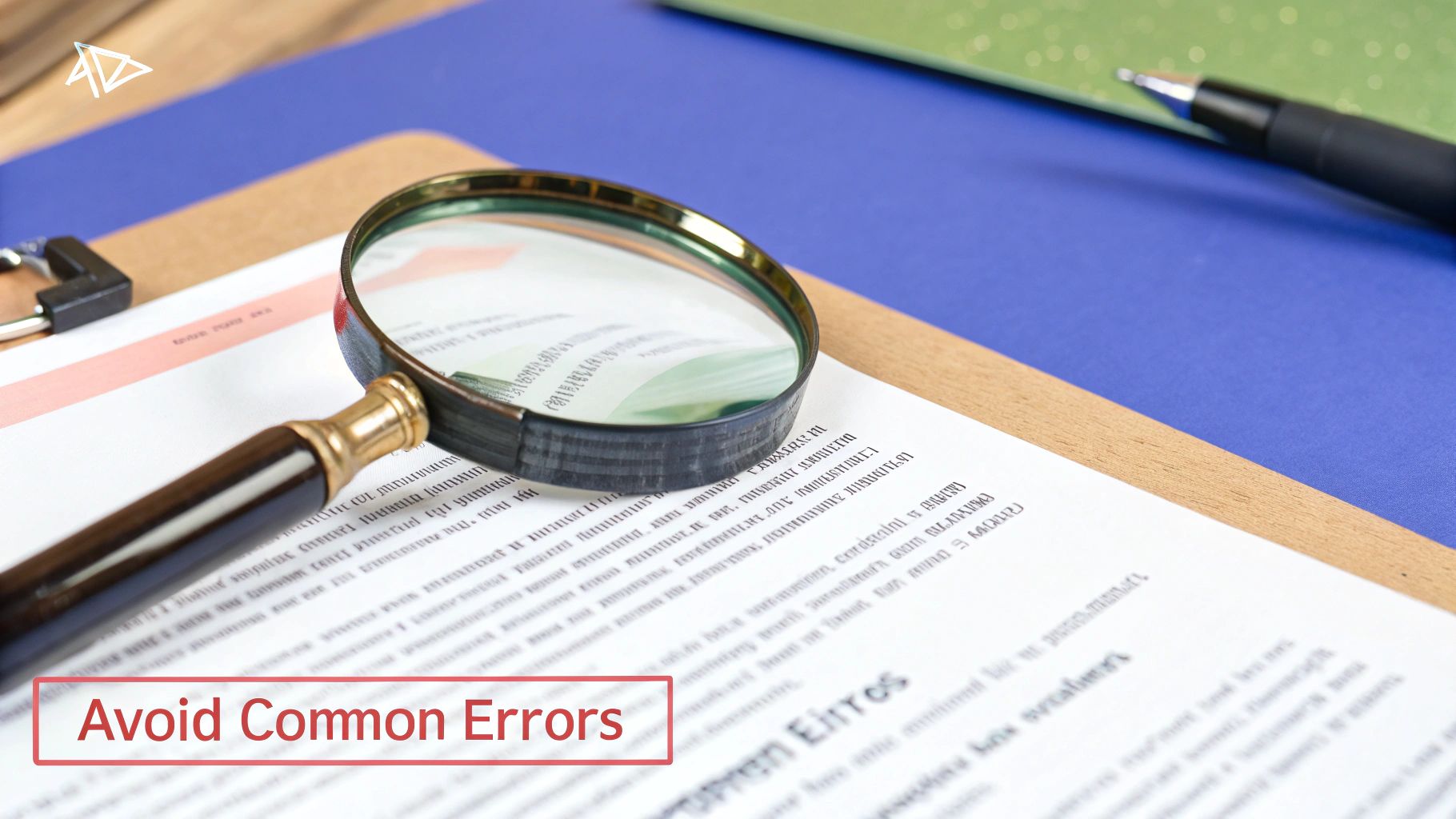
The Transformation of Legal Document Review

Remember sifting through stacks of paper for legal document review? This old analog process has changed significantly. It's now a complex digital operation. The sheer amount of information involved has completely reshaped legal workflows.
From Banker's Boxes to Bytes: The Rise of ESI
This change is mainly due to the huge increase in electronically stored information (ESI). Legal professionals used to work primarily with physical documents. Now, emails, text messages, social media posts, and other digital files are key parts of legal document review. This calls for new tools and approaches to manage and analyze data effectively.
This growing reliance on digital evidence has made legal document review much larger and more complex. The legal field has changed drastically since the early 2000s when courts started requiring ESI in discovery. Today's legal teams review traditional documents and emails. They also process data from platforms like Slack, Microsoft Teams, and WhatsApp. These platforms create far more material, including emojis, chat logs, voice notes, and even disappearing messages. Find more detailed statistics here. This demands specialized tools and workflows just to handle the data volume.
Navigating the Challenges of Modern Communication
Modern communication platforms bring unique issues. Think about how emojis are used in legal situations. Their meaning can be subjective and change depending on context. This requires careful review. Chat logs often lack the formal structure of traditional documents, making key information harder to find. Disappearing messages add another layer of complexity. They create challenges for data preservation and recovery.
Balancing Document Analysis and Strategic Case Development
The move to digital document review impacts how legal teams use their time. With so much data, teams spend more time sorting and managing information. This leaves less time for critical strategic case development. Tools like Legal Document Simplifier can help fix this imbalance. Its AI features speed up review by quickly finding key terms, deadlines, and obligations. This lets legal professionals focus more on strategic planning.
The Critical Role of Human Review
Even with advanced technologies like AI, human review is still essential. Understanding nuance, context, and the strategic implications of information is a distinctly human skill. Tools like Legal Document Simplifier enhance, not replace, legal expertise. They help professionals make well-informed decisions based on easily available information.
Tools That Transform How You Review Legal Documents
Reviewing legal documents no longer requires painstaking manual effort. This section explores the key tools modern legal teams use to efficiently manage their document review processes. We’ll examine which features truly enhance the process and which add unnecessary complexity.
From Simple Annotation to AI-Powered Platforms
Effective document review requires a range of tools, from basic to highly sophisticated. Simple annotation tools allow legal professionals to highlight, comment on, and redact information within documents. This is essential for collaborative review and streamlined analysis. For example, tools like Legal Document Simplifier offer these capabilities, making team collaboration seamless and insight sharing easy.
Document management systems play a crucial role in organizing and accessing large volumes of legal documents. These systems offer secure storage, version control, and advanced search functionality, all fundamental to efficient review. They also often integrate with other legal tech tools, further streamlining workflows and reducing manual data entry.
The Power of AI in Document Review
AI-powered platforms are becoming increasingly important in legal document review, accelerating the entire process. These tools use machine learning algorithms to automate tasks like document classification, key term extraction, and even risk assessment. This automation allows legal professionals to focus on in-depth analysis and strategic decision-making. The infographic below visually compares manual document review with AI-assisted review, highlighting differences in time, error rate, and cost.

As the infographic shows, AI-assisted review substantially reduces the average time spent per document from 4 hours to 1 hour, while simultaneously lowering the error rate from 10% to 2%. The cost per document also decreases significantly, from $200 to $50, highlighting the potential cost savings. This shift is evident in the growth of the global eDiscovery market, which encompasses these technologies. Between 2024 and 2025, the market expanded from $14.27 billion to $15.14 billion, a 6% increase. This growth is driven by the increasing volume of litigation and the growing reliance on digital evidence. Learn more about the eDiscovery market here.
Choosing The Right Tools For Your Needs
Choosing the right legal document review tools depends on the specific needs of the legal team. Factors to consider include the volume and complexity of documents typically handled, the technology budget, and the current tech infrastructure. A small firm, for example, might find basic annotation and document management tools sufficient. A large firm dealing with complex litigation, on the other hand, would greatly benefit from AI-powered solutions. Integrating the correct tools can significantly improve the efficiency and effectiveness of the legal document review process.
To help illustrate the differences between some available platforms, we've compiled a comparison table:
The following table compares several leading legal document review platforms, outlining their core features, AI capabilities, price range, and ideal use cases. This information can be helpful in determining the best platform for your specific needs.
Legal Document Review Platforms Compared Compare the most effective legal document review solutions based on real-world performance and value
| Platform Name | Core Features | AI Capabilities | Price Range | Best For |
|---|---|---|---|---|
| Legal Document Simplifier | Annotation, summarization, translation | Jargon simplification, key point extraction | $29-$79/month | Small to medium businesses |
| Kira Systems | Contract analysis, due diligence | Clause identification, data extraction | Contact for pricing | Large law firms, corporations |
| Logikcull | eDiscovery, legal hold | Automated redaction, predictive coding | Contact for pricing | Litigation support, legal departments |
| DocuSign | Electronic signature, document workflow | Agreement automation, analytics | $10-$25/user/month | Contract management, transaction processing |
Key Insights: While platforms like DocuSign focus on streamlining contract workflows and signatures, others like Kira Systems and Logikcull cater to more complex legal tasks such as due diligence and eDiscovery. Legal Document Simplifier stands out by focusing on simplifying legal language and making contracts more accessible to a wider audience. Choosing the right tool depends on the specific needs and budget of your organization.
How AI Is Revolutionizing Legal Document Analysis

Artificial intelligence is changing how legal professionals review documents. It offers real benefits, changing how lawyers approach document analysis. This section explores the practical ways AI is impacting legal document review.
Automating Routine Review Tasks With AI
One of AI's biggest impacts is automating routine document review tasks. Machine learning algorithms can identify key terms, dates, and clauses with impressive accuracy. AI can quickly scan thousands of pages to find specific contract obligations or deadlines. This allows attorneys to focus on higher-level work requiring human judgment, such as strategy and negotiation.
Measurable ROI and Practical Applications
The return on investment (ROI) of AI in legal document review is increasingly evident. Some AI implementations offer significant cost savings and faster turnaround times. Tools like the Legal Contract Analyzer can streamline the review process. AI-powered platforms are used across various legal fields, from litigation to transactional work.
In litigation, AI can quickly identify relevant documents in discovery. This reduces the time and cost of manual review. In transactional work, AI analyzes contracts for potential risks and ensures compliance. Check out our guide on AI for legal documents.
Balancing Capabilities and Limitations
AI offers significant advantages, but it's important to understand its limits. Currently, AI excels at tasks with structured data and clear rules. However, it can struggle with nuanced tasks needing subjective interpretation or context.
For example, AI can identify a clause about termination rights. But it may not grasp the clause's implications within the whole agreement. Human expertise remains essential in these areas.
Integrating AI into Legal Workflows
Integrating AI into legal workflows requires careful planning. Successful implementation means choosing the right technology and adapting processes and training staff. This might involve redefining team roles. Some professionals may focus on managing AI tools, while others concentrate on strategic analysis.
AI adoption for legal document review has grown. Industry surveys show increasing trust and implementation. The 2025 AI in eDiscovery Report found 95% of legal professionals have medium to high trust in AI for eDiscovery tasks. The use of enterprise AI solutions has increased by 95% compared to last year. 35% of organizations use such tools, and 49% are actively evaluating options. Organizations using AI for document review report a 40-60% reduction in manual review time. Learn more about AI in eDiscovery here.
The Evolving Role of Human Reviewers
AI is changing the role of human reviewers. Rather than replacing them, AI turns reviewers into supervisors. They oversee AI's work and focus on complex issues. This shift lets legal professionals spend less time on tedious tasks and more time on higher-value work needing human judgment.
Legal teams can handle more documents efficiently and concentrate on strategic aspects. You might be interested in: How to master legal document review workflows.
Proven Workflows to Review Legal Documents Efficiently
AI is reshaping legal document analysis. For more in-depth information, check out the insights on AI for legal documents. Moving beyond theory, this section examines practical, efficient workflows for reviewing legal documents that successful legal teams use.
Establishing a Robust Review Protocol
A well-defined review protocol is the foundation of efficient document review. This protocol should clearly outline the scope of the review. It should specify the types of documents, the key information to be extracted, and the criteria for relevance. For example, a contract review protocol might prioritize key dates, payment terms, and termination clauses. This structured approach ensures consistency and reduces the risk of overlooking crucial details.
A robust protocol also clarifies roles and responsibilities for each team member. This avoids duplicated effort and ensures accountability. A well-designed protocol incorporates quality control checks at different stages, which brings us to our next point.
Creating Effective Coding Taxonomies
Developing a coding taxonomy is crucial for organizing and categorizing information. It’s like creating a detailed index for your documents. The taxonomy should be tailored to each case or project, using clear and consistent terminology. This ensures everyone on the team understands and applies codes uniformly.
For example, in litigation, a coding taxonomy might categorize documents by relevance to specific claims or defenses. A well-structured taxonomy simplifies searching, filtering, and analyzing extracted information, streamlining the review.
Implementing Quality Control Measures
Quality control is paramount in legal document review. Errors can have significant consequences. Implementing quality control measures throughout helps identify and correct errors early. These might include double-checking key information, peer reviews, and statistical sampling. These measures act as a safety net.
Having a second set of eyes on important documents catches overlooked mistakes. You might be interested in: How to master legal document review workflows. For example, if two reviewers independently extract the same key dates and financial figures from a contract, it reinforces the accuracy of the information.
Blending Traditional and Technology-Assisted Approaches
Leading firms now blend traditional methods with technology-assisted approaches. While human reviewers excel at context and nuance, AI-powered tools like Kira Systems can automate tasks like redaction and key term identification. This combination allows legal professionals to focus on high-level analysis and strategic decisions.
Customizing Workflows for Different Document Types
Different document types require different review strategies. A contract review focuses on obligations and deadlines. A due diligence review prioritizes uncovering potential risks and liabilities. Tailoring the workflow to the document type ensures the review process is efficient and targeted.
To illustrate how to track and improve efficiency, let's look at some key metrics:
The table below outlines some key performance indicators (KPIs) and how to improve them:
Document Review Efficiency Metrics That Matter Track these key performance indicators to continuously improve your document review process
| Metric | Industry Benchmark | How to Measure | Improvement Strategies |
|---|---|---|---|
| Documents Reviewed per Hour | Varies depending on complexity | Track documents completed per reviewer per hour | Implement AI tools for initial screening |
| Error Rate | Aim for less than 5% | Track instances of incorrect information extraction | Implement quality control checks, provide additional training |
| Time to Completion | Depends on project scope | Track total time spent on each review phase | Streamline workflows, use project management tools like Asana |
| Cost per Document | Varies based on resources used | Calculate total review cost divided by number of documents | Automate repetitive tasks with AI |
By monitoring these metrics, legal teams can identify areas for improvement and optimize their document review processes. Focusing on these elements leads to more efficient and accurate document reviews.
Overcoming Major Challenges in Legal Document Review

Reviewing legal documents can be a daunting task. This section addresses the key challenges and provides practical solutions from experienced legal professionals. We'll explore how to manage large volumes of data, protect sensitive information, and navigate the complexities of cross-border reviews. We'll also discuss the crucial interplay of technology and the human element in ensuring a thorough and efficient review process.
Managing Massive Data Volumes
The sheer volume of data in legal cases has grown exponentially. This makes efficient review not just desirable, but essential. Prioritization is key. Focus on the most relevant documents first.
For example, in a contract dispute, begin with the primary agreement and any subsequent amendments. Learn more about automated contract analysis. Technology can be a powerful ally. Tools like Legal Document Simplifier can identify key terms and clauses quickly, accelerating the initial review phase.
Protecting Sensitive Information and Privilege
Protecting sensitive data is paramount during document review. A common and effective approach is using a secure document review platform.
These platforms offer features like encryption and granular access controls. This helps maintain confidentiality and protect privileged information. For instance, access can be limited to specific team members based on their roles and the information they need to access.
Navigating Cross-Border Complexities
Cross-border legal document reviews present their own set of challenges. Language barriers are a significant hurdle. Translation services are often required.
However, ensuring accurate translation that preserves the original meaning of the documents is critical. Different jurisdictions also have unique legal requirements. Review teams must be well-versed in the specific laws of each relevant jurisdiction.
Addressing Technological and Human Factors
Technology is a double-edged sword in document review. Compatibility issues between different software programs can create frustrating delays. Choosing tools that integrate seamlessly with existing systems is vital for a smooth workflow.
Reviewer fatigue is another important consideration. Long hours spent reviewing dense legal text can lead to errors. Regular breaks and a manageable workload are essential to maintaining accuracy and focus.
Implementing Actionable Remedies
Improving your document review process requires a comprehensive strategy. A clear review protocol is a good starting point. This document outlines the steps involved in the review, ensuring consistency and minimizing the risk of errors.
Providing sufficient training to all review team members is equally important. Everyone on the team should be proficient with the tools and techniques involved in the review process.
Leveraging Technology for Efficiency
Technology is crucial for overcoming document review challenges. AI-powered tools, such as Legal Document Simplifier, can drastically speed up the process.
These tools automatically extract key information, highlight important clauses, and even summarize complex documents. Reviewers can then focus on analysis rather than simply reading through mountains of text. This increased efficiency is vital in managing the ever-growing volume of data in legal cases. These tools also help identify potential risks and inconsistencies that might otherwise be missed. This proactive approach can save significant time and resources in the long run. By combining technological solutions with robust review protocols and a focus on reviewer well-being, legal teams can tackle even the most demanding document review projects efficiently and effectively.
The Future of How We'll Review Legal Documents
The legal field is constantly changing, and so is the way we review legal documents. New developments, from advances in artificial intelligence to changes in how and where we work, are set to reshape how legal professionals interact with documents. This section explores these trends and offers practical advice to prepare for the future of legal document review.
Next-Generation AI: Beyond the Buzz
Artificial intelligence is already impacting legal document review, but the future holds even more potential. Next-generation AI goes beyond simple keyword searches and basic tasks. Imagine AI that can grasp the subtleties of legal language, find hidden risks in contracts, and even predict litigation outcomes based on precedent. This deeper analysis will free up legal professionals for strategic work and client interaction.
For example, AI could analyze a complex merger agreement, highlighting not just key dates and financials, but also assessing potential antitrust issues based on market data and regulations. While still developing, early progress suggests a future where AI plays a much bigger part in legal analysis.
Blockchain and Document Verification
Blockchain technology offers a compelling way to verify the authenticity and integrity of legal documents. By creating an unchangeable record of each document, blockchain can eliminate the risk of fraud and forgery. This is especially important for contracts, wills, and other binding documents.
Imagine contracts automatically executed and enforced via smart contracts on a blockchain. This would significantly reduce the time and expense of traditional contract management. This secure and transparent system would also build trust between parties.
The Impact of Remote and Hybrid Work
The rise of remote and hybrid work models is changing how teams review documents. Cloud-based document management systems and collaborative review platforms like Microsoft SharePoint are now crucial for legal teams working from different locations.
This shift requires new approaches to team communication and project management. Secure document sharing, real-time collaboration features, and version control are vital for smooth teamwork. For example, teams could use shared online workspaces to review documents together, adding comments, highlighting sections, and tracking changes live.
Preparing for the Future of Legal Review
Forward-thinking legal departments are already getting ready for these changes by investing in staff training to improve digital literacy. They're also exploring new technologies and adapting their processes to use AI and other advanced tools.
This proactive approach will set them up for success in a changing legal landscape. It’s not just about using new technology, but about developing a culture of continuous improvement and innovation. Legal professionals might, for example, pursue certifications in legal technology or attend workshops on AI and data analytics.
Developing data analysis skills will also be vital. As legal documents are increasingly digitized, the ability to analyze large amounts of data and find meaningful insights will be in high demand.
Actionable Insights for Today
The future of legal document review holds many exciting opportunities, and you can take steps now to prepare:
- Embrace lifelong learning: Keep up with the latest legal tech trends through online resources, industry events, and educational programs.
- Explore AI-powered tools: Experiment with AI-driven document review platforms like Legal Document Simplifier to gain hands-on experience.
- Enhance your data analysis skills: Improve your ability to analyze and understand data so you can handle the increasing amount of digital information.
- Foster a culture of innovation: Encourage your team to adopt new technologies and adjust their workflows to be more efficient.
By taking these actions, you can prepare yourself and your team for a successful future in legal document review. The future is coming, start preparing today.